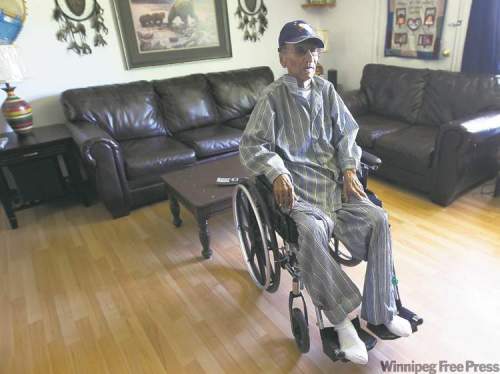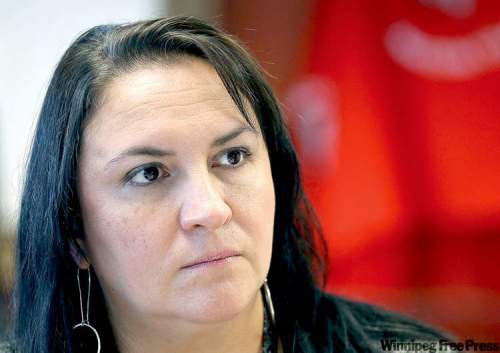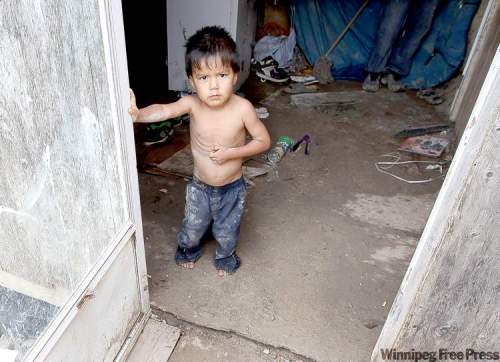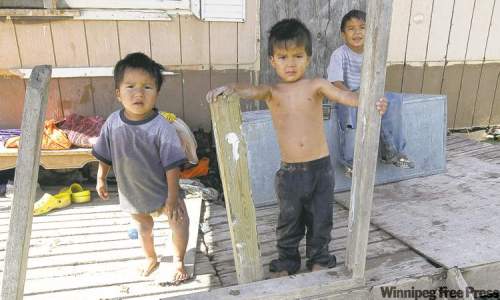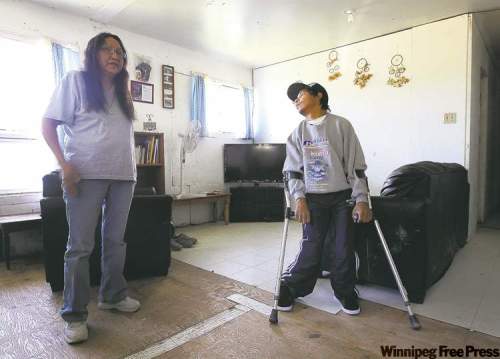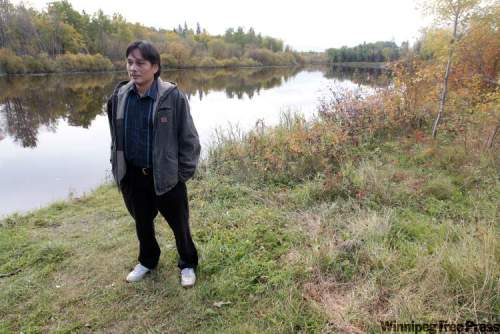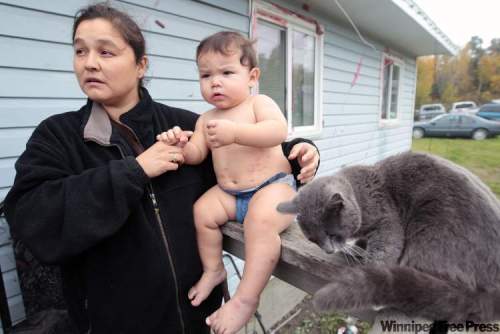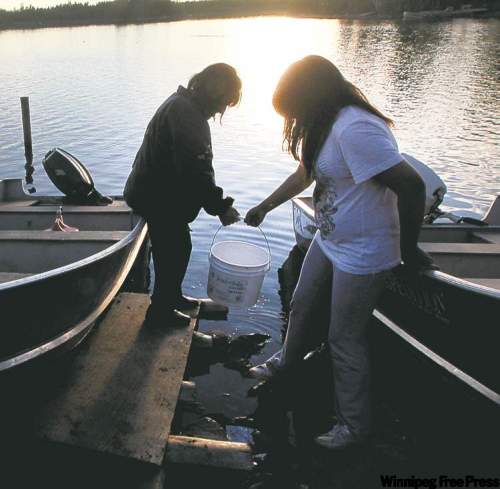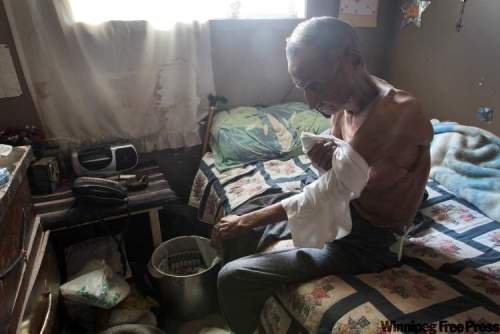Living Without Running Water
Public shock, anger over issue evaporate
5 minute read Saturday, Nov. 5, 2011WHERE’S the outrage?
It’s been a year since the Winnipeg Free Press first highlighted the damage to health and human dignity caused by the lack of running water in 1,400 First Nations homes. The series of stories spawned hundreds of emails, online comments and letters to the editor, many asking what action average people could take to solve the problem.
But since then, a small handful of advocacy campaigns have largely failed to galvanize public opinion, few charitable organizations have stepped up to tackle the problem and the federal government is under no sustained pressure to provide essential services to First Nations mired in Third World conditions
“All that energy and public attention just dissipated,” said Laurel Gardiner, director of the Manitoba office of the Frontiers Foundation, an aboriginal charitable agency that’s piloting a home retrofit program in Island Lake.
Advertisement
Weather
Winnipeg MB
-15°C, Cloudy with wind
Lottery for a life
7 minute read Preview Saturday, Nov. 5, 2011Reserves to get upgrade
5 minute read Preview Tuesday, Oct. 25, 2011Misery and indifference
6 minute read Preview Saturday, Oct. 22, 2011Easy to judge, difficult to escape
6 minute read Preview Saturday, Oct. 22, 2011Degrading third-world conditions one more hurdle for disabled man on reserve
7 minute read Preview Saturday, Oct. 22, 2011Safe water a human right: Canadians
2 minute read Monday, Nov. 15, 2010ALMOST all Canadians believe clean water should be guaranteed as a human right, according to a poll to be released in Winnipeg this month by the Trudeau Foundation and the University of Manitoba.
Of those surveyed, 96 per cent said water should be a guaranteed right, while only two per cent said it should not -- the strongest response to any of the six emerging rights the pollsters proposed.
"The public is concerned about this question of water and environmental problems much more than we think," said Trudeau Foundation president Pierre-Gerlier Forest. "I find it quite encouraging."
The support for clean water as a human right was solid across income groups, education levels and regions of the country. Adults under the age of 45 were a bit more supportive, as were women.
Sewer superhero
6 minute read Monday, Nov. 15, 2010FISHER RIVER -- At midnight on a bitter Manitoba winter night when the sewage plant on a remote First Nation breaks down, who you gonna call?
Troubleshooter Ken Mattes.
He has installed a water plant for the Canadian Forces in Egypt and built warm flush toilets for soldiers cleaning up radioactive debris from a Soviet satellite that crashed in the Arctic.
"We had running water in a week."
Water service survey
5 minute read Monday, Nov. 15, 2010Engineers have fanned out across Canada to evaluate the state of water and wastewater services on almost every one of the country's 610 First Nations.
The $9-million assessment comes in the wake of a long list of damning government reports, issued over more than a decade, that warned about the health consequences of not solving reserve water woes.
The project, co-ordinated by Winnipeg engineer Heather MacKenzie, is supposed to help the federal government pin down what it will cost to bring up to standard every First Nations water and sewage plant in Canada.
A similar assessment in 2003 pegged the cost at about $1.7 billion over five years. Almost that much was spent by 2008, but 117 First Nations still have to boil their drinking water.
Billions spent
6 minute read Monday, Nov. 15, 2010NO one can accuse the Canadian government of ignoring water and waste-water systems on First Nations over the last 15 years.
The Library of Parliament estimates $3.5 billion was spent between 1995 and 2008 and hundreds of millions more have been committed since.
After that kind of staggering expenditure, why is tap water on so many First Nations unfit to drink and why do half the homes in Island Lake lack running water?
Then-Indian Affairs minister Chuck Strahl pretty much admitted this spring his department cannot keep up with infrastructure needs on reserves -- unless there's a major change in how projects are funded.
Stuck with the flow
5 minute read Preview Saturday, Nov. 13, 2010Boiling mad
6 minute read Preview Saturday, Nov. 13, 2010‘A slap in the face’
6 minute read Preview Friday, Nov. 12, 2010Red Sucker Lake water woes boil over
4 minute read Preview Wednesday, Nov. 3, 2010Less water than a refugee camp
4 minute read Preview Saturday, Oct. 30, 2010Poor sanitation, poor health
4 minute read Preview Saturday, Oct. 30, 2010LOAD MORE


